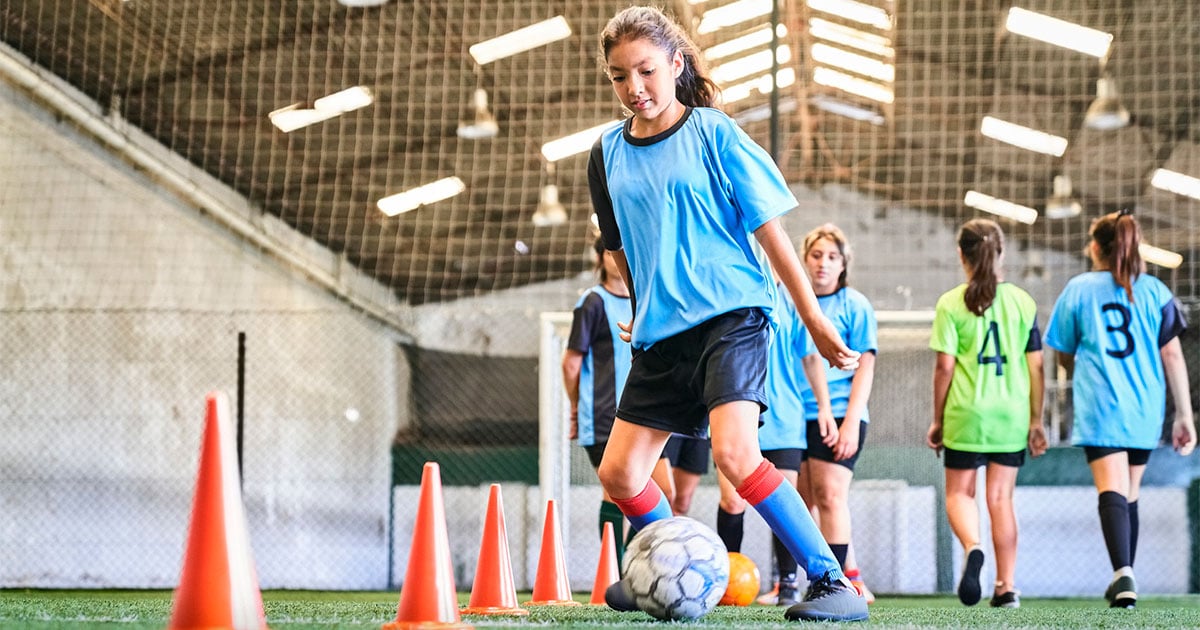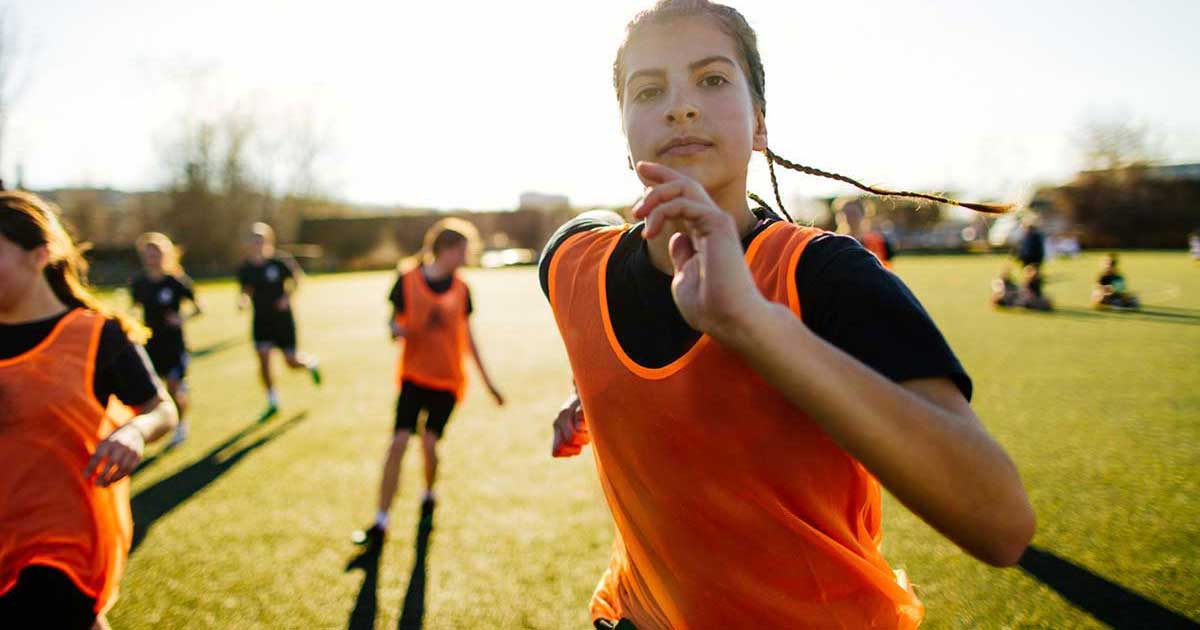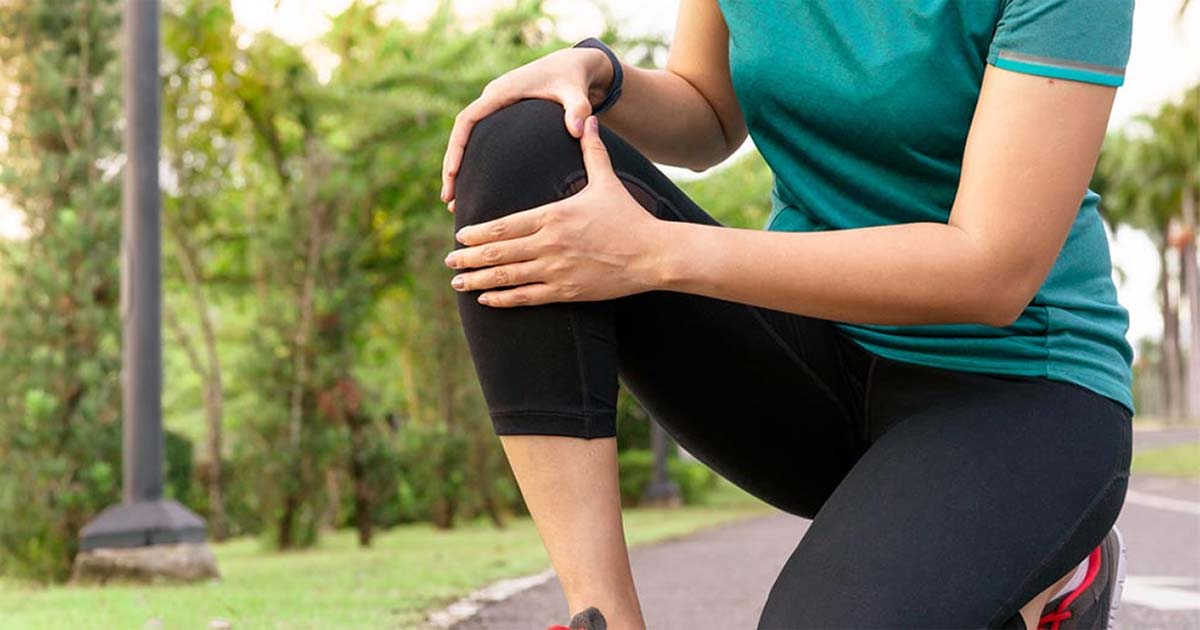
Advice to improve your movement, fitness, and overall health from the #1 in orthopedics in the U.S.
Injury Prevention in Female Soccer Players
Soccer is hugely popular worldwide. Learn more about preventing injury for female players of all ages.
Advice to improve your movement, fitness, and overall health from the #1 in orthopedics in the U.S.

A study published on American collegiate soccer players in 2011 reported that the ankle was the most frequently injured joint in female soccer players, followed by the knee and the hip. The most common injury is a sprain of the lateral ankle ligaments, with the most common surgery related to soccer being anterior cruciate ligament (ACL) reconstruction of the knee. Female collegiate soccer players have also been reported to have a very high rate of concussion, similar to the rates seen in male collegiate football players (NCAA, 2015).
Let’s take a closer look at these three key injuries:
- Ankle sprains occur most often in soccer when a player makes direct contact with another player, like during a tackle or when landing from a header. Most often, the ankle is injured in inversion, causing a tear of the lateral ligaments on the outside of the ankle.
- ACL tears of the knee in female soccer players are usually non-contact injuries, meaning that they occur without contact from an opposing player. Activities such as changing direction, decelerating, and landing from a jump are particularly risky. ACL injuries and prevention are important to discuss because of the costs associated with surgery and time lost, and the potential long-term consequences for knee joint health.
- Most often, a concussion occurs due to contact with an opponent, either head-to-head or head-to-elbow.
Why Females Are More Prone to Soccer Injury
Many scientific studies have shown that males and females are built and have a tendency to move differently. In general, females tend to move with a more upright posture, with less bend in their hips and knees, and they jump and land with their knees caving inwards (knee valgus). These movement patterns can contribute to decreased lower extremity stability, increased strain on the ACL, and increased risk of ankle sprain. Female soccer players also tend to have less core and hip strength when compared with their male counterparts, which also places them at higher risk of injury.
Minimizing Risk of Soccer Injury
A strong, well-trained athlete in a non-fatigued state with excellent body awareness has the lowest risk of sustaining an injury. Soccer is an aerobic sport, with most games lasting 90 minutes and players covering up to 10 miles. These 90 minutes are interspersed with multiple high-intensity bouts of work requiring explosive speed and power, so soccer players really need to have a strong engine! Soccer requires endurance, power, speed, agility, the ability to jump and land safely, change direction, run forward and backwards, move sideways and stop and start rapidly.
Train to Play, Not Just Play to Train
Injury prevention begins with building a foundation of efficient movement patterns with strength training, balance, cardiovascular fitness and flexibility. Well-rounded athletes who participate in a wide variety of sporting activities from a young age tend to get injured less. In this way, the long-term athletic development and health of the soccer player is maximized. Soccer players must train to play, not just play to train, meaning that it takes more than just playing the game to fully develop a soccer athlete.
Practicing squatting, lunging, jumping and landing with correct form can improve lower body strength and alignment. Learning to balance on one leg with increasing challenges will decrease your risk of rolling your ankle. Injury prevention programs incorporating these training principles have been shown to work, so long as the player continues to do them. In addition, rest is just as important as training for any athlete. Adequate rest should be built into each week, season and year, to allow enough time for physical and mental recovery from the stress of training.
Concussion has proved to be a more difficult injury to prevent in female soccer players. Efforts have focused on rule changes, including immediate red card ejection for any player leading with their elbow while challenging for a header. Research is currently being conducted into the efficacy of protective headwear in reducing the rates of concussion in soccer players. If you do suffer an injury, it is important to rehabilitate completely before returning to play. A body part with continued pain, weakness or movement restriction can contribute to faulty movements, and cause overcompensation elsewhere.
Published 8/17/2022


